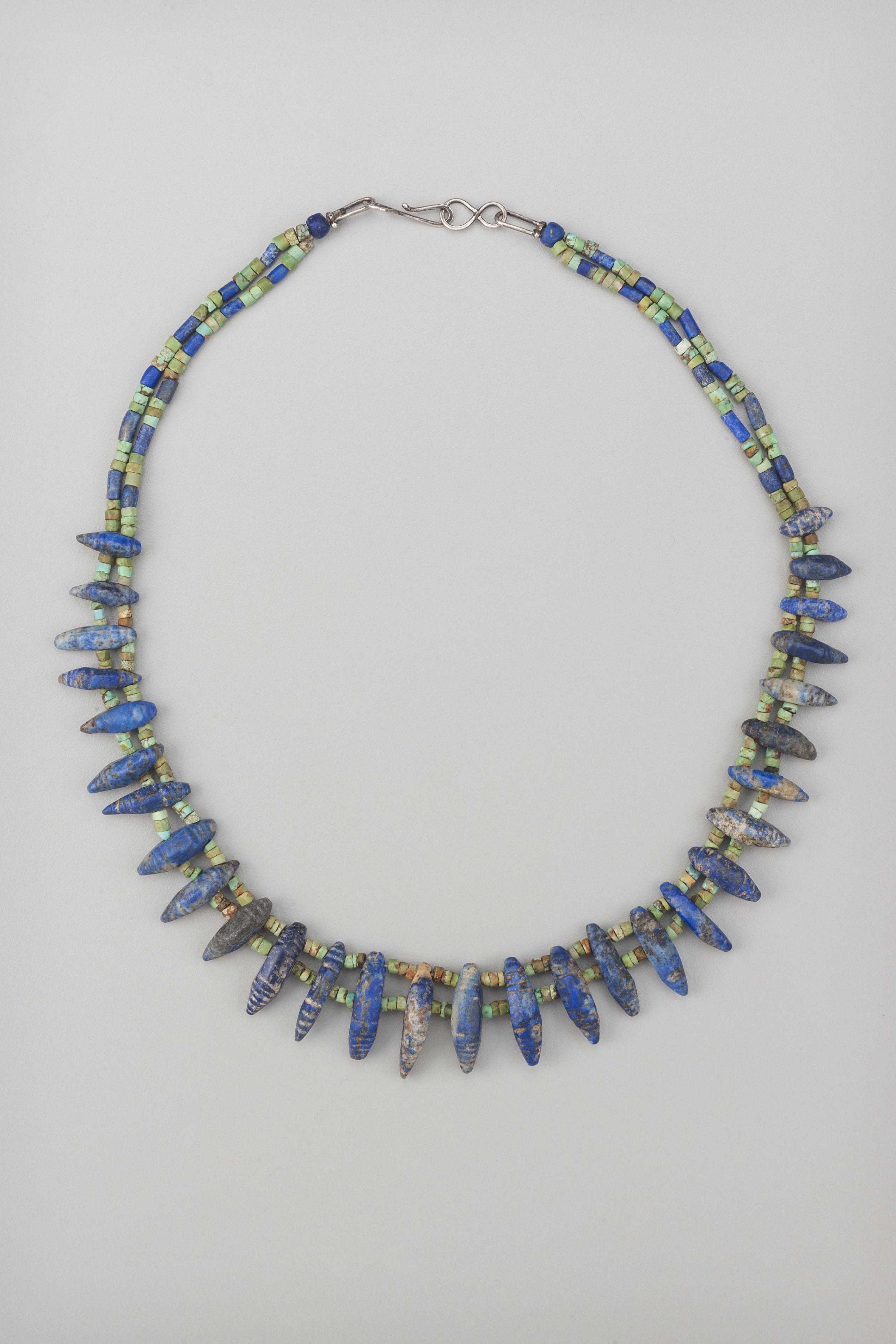Ancient Double Drilled Lapis Lazuli Pendants and Turquoise Beads
Collection:
Swat Valley
Material:
Lapis Lazuli, Turquoise, Silver
Size:
The necklace is 20 inches (51 cm) in length. The necklace weighs 54.5 gm.
Price:
$2,500.00
A necklace of twenty-nine double drilled lapis beads of elongated shape, tapering at each end, and grooved at the top and the bottom with parallel lines. The back sides are flat and the front sides bulge outward at the middle. Each of the pendants is spaced with three turquoise discs through both perforations. There are twenty-four lapis lazuli cylinder beads, 3 mm in width and 5 mm in length, two strands with six each per side, at the back of the necklace, each spaced with three turquoise disc beads. There are a total of 258 turquoise disc beads. They are about 3 mm in width and vary in length from 3 mm to 1.2 mm. The two stands are joined with a lapis lazuli bead at the very back and thread into silver beading tips to which the hook and eye clasp are attached. The lapis pieces graduate in size towards the back of the necklace. The center bead is 2.45 cm in height. It is 6 mm wide at the center and 9.0 mm thick at the thickest point just above the center. The smallest is 1.22 cm in height and 5.0 mm wide. It is 6 mm thick at the center. The diameters of the drill holes are 2 mm. There are variations in the forms but all follow the same basic schema: An elongated form is drilled through the side at the middle or just above the middle. A second hole is drilled through the side near the top. The bottom half tapers to a narrower point than the top half. The form is flat on the back and bulges outward at the middle. A series of grooves is cut across the form at the top end and the bottom end. These can be as few as two grooves across the top and three across the bottom to five across the top and seven across the bottom. The idea seems to be to fill the space rather than to have a specific number of grooves. There have been a number of suggestions as to what these forms represent. We favor the idea that these are representations of silk worms. There are jade versions of larval forms found in tombs in China from the Warring States Period and Western Zhou. We think that these may be the prototypes for these lapis lazuli beads. The time period is about the same – roughly 500 B.C. to 500 A.D. These beads come from the Swat Valley in what is now northern Pakistan, between the Indus River and the Karakoram Mountain range to the north. The clasp and beading tips are sterling silver.
